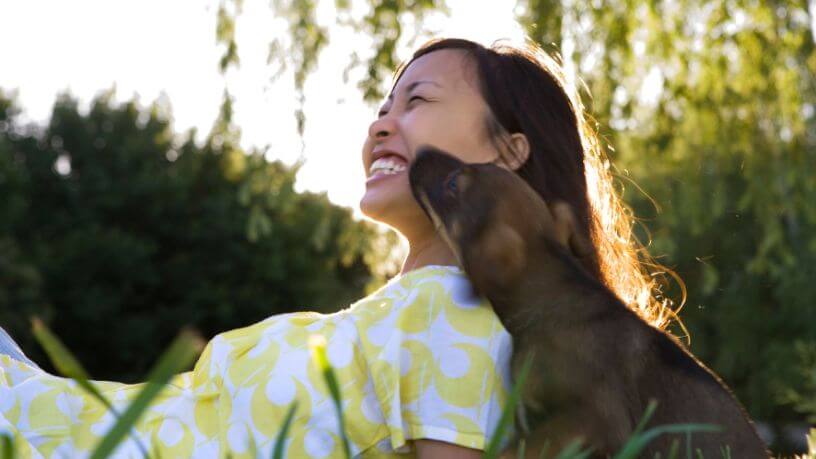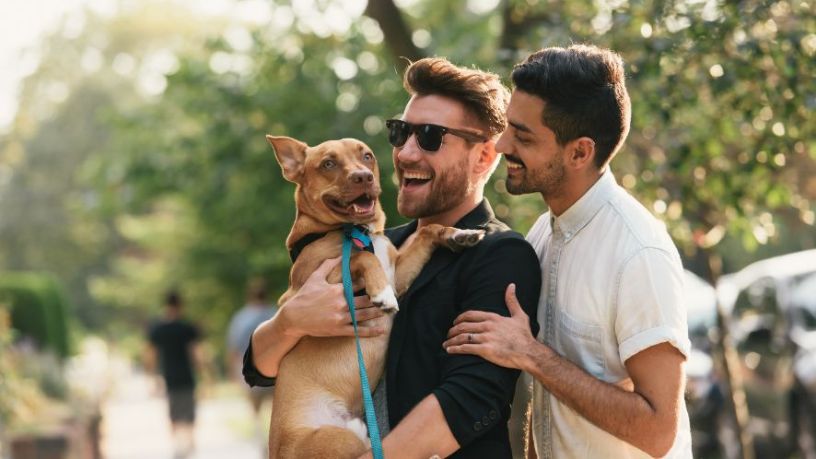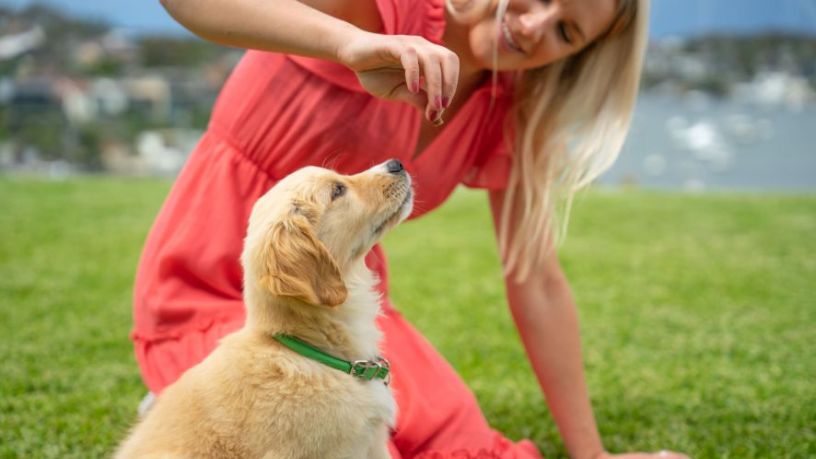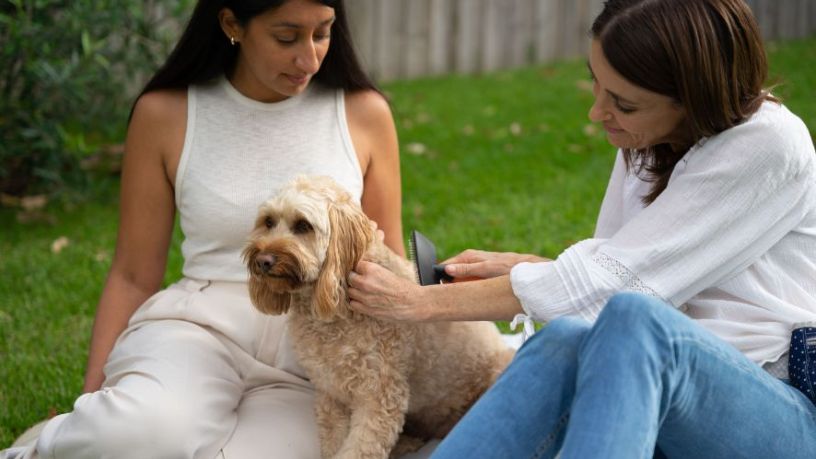Training doesn’t happen overnight, so you’ll need to be consistent and patient with your pup.
On this page
Key takeaways
Select a yummy treat as a reward for training only so your dog knows what’s coming if they nail their session.
Never punish a pet for getting training wrong. Ignore bad behaviours and reward good behaviours for the most effective outcomes.
Is it time to teach your dog the house rules?
When it comes to obedience training, it’s important to get started early and be consistent. Training your dog isn’t just about ensuring they do what you tell them to. Training can help make life healthier, happier and safer for your pet.
Follow these 5 golden rules to make dog training easy and fun.
Go at your dog's pace
You might think blocking out a 2-hour training session is the best way to train a pet quickly, but, just like humans, canines can only concentrate for so long. Training pushes your dog’s mental abilities and it can be exhausting.
Break your trick and obedience training into short, regular sessions rather than pushing your pup for hours at a time. Too long a session and they may get tired, frustrated, bored and overwhelmed. Most importantly, they won’t learn as efficiently.
Around 15 to 20 minutes every day broken into 5 minute blocks is plenty for young puppies, while a block of 15 to 20 minutes maximum in a day is enough for older dogs.
It can be a good idea to finish up each training session practicing a command your dog already knows, so they can end on a positive note.
Be consistent and patient
Don’t give up on your pup just because they don’t learn a new trick the first time around. Dogs learn at different speeds. If your pup is taking longer than you’d expect to pick up a new trick or command, be patient and keep trying. Training is an ongoing practice that will require consistent effort from you every day.
It’s also essential to stay consistent with the commands or cues you’re teaching your dog. If you sometimes tell them to ‘lie down’ and at other times tell them to ‘drop’, this will confuse them. Pick one cue and stick to it. Similarly, don’t use the same command or cue for different actions and make sure everyone in the household is using the same cues too.
Use (good) rewards
All training should be rewards-based, according to the RSPCA. And the more your dog values the reward you give them during training, the more likely they are to repeat that behaviour.1
For many dogs, this means special food treats, such as small pieces of cheese or meat. Just be sure to save these treats for dog training so they maintain their value.
If your dog isn’t motivated by food you can use praise, pats or playtime as the reward for a job well done. Even a good belly scratch will be enough if that’s what your dog loves the most.
Set your dog up for success
You want your dog to succeed, so give them the best chance by making it easy for them to get it right. This means minimising distractions, especially when they’re learning a new trick or command. Choose a quiet room in your house, without other people or animals, traffic noises or interesting smells to capture their attention. Make sure you (and the reward) are the most interesting things available during your session, so their attention doesn’t wander.
Never punish
Training that involves punishing your pup for unwanted behaviour is not supported by the RSPCA, and studies show that dog training techniques such as this are stressful for dogs.2
You also run the risk of accidentally reinforcing unwanted behaviour. If your dog is barking excessively because they want attention and you yell at them to stop, you’re giving them the outcome they wanted because any attention is better than no attention. So, they’re likely to keep on barking. It’s far more effective to reward them when they’re quiet and simply ignore the barking.

At Bupa, trust is everything
Our health and wellbeing information is regularly reviewed and maintained by a team of healthcare experts, to ensure its relevancy and accuracy. Everyone's health journey is unique and health outcomes vary from person to person.
This content is not a replacement for personalised and specific medical, healthcare, or other professional advice. If you have concerns about your health, see your doctor or other health professional.
1RSPCA. (2019). The do's and don'ts of training your dog. RSPCA.
2RSPCA UK. (2024). Dog training. RSPCA UK.
You might also like...
10 ways dogs boost our mental health
Find out how dogs boost our mental and physical health by encouraging activity and social connections, and offering companionship and unconditional love.
Choosing the right dog for you
Learn how to choose the right dog for you by considering breed, lifestyle, adoption options and important factors such as health care and insurance.
How to teach a puppy to sit
Teaching your dog to sit is a great way to start their training, so what’s the best way to do it? We talk with Dr Katrina Warren for some top training tips.
The essential dog grooming guide
Whether you’re giving them the usual brush, bath and trim or treating them to some TLC, it’s important to know how to safely and effectively groom your dog.





